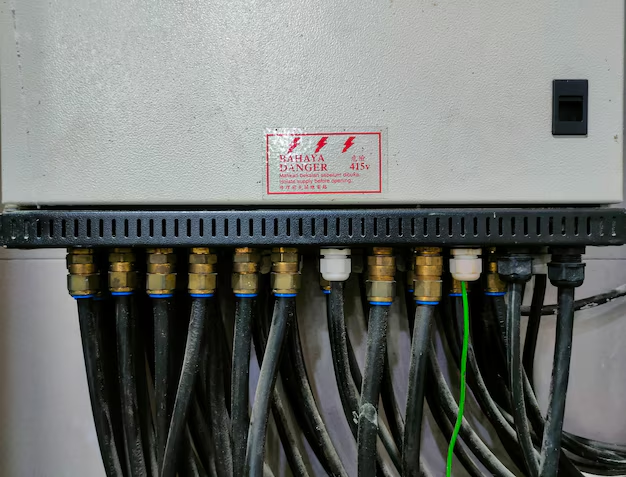Safely Powering Your Home: Connecting a Generator Without a Transfer Switch
In times of power outages, having a reliable backup is crucial to keep your home essentials running smoothly. While transfer switches are the standard, you might find yourself in a situation where you need to connect a generator to your house without one. This guide walks you through the steps and precautions necessary to do this safely, efficiently, and effectively. ⚡🏡
Understanding the Basics of Portable Generators
Why Use a Generator?
Generators provide emergency power when the grid fails, keeping critical appliances and systems operational. This could range from refrigerators and freezers to lights and communication devices. When a storm or unforeseen event knocks out the electricity, a generator can be a lifesaver.
Types of Generators and Their Uses
- Portable Generators: Easy to move but require manual setup and connection each time they're needed.
- Standby Generators: Permanently installed, these automatically start during a power outage but require professional installation and are more costly.
For more flexible emergency use, portable generators are the common choice due to their cost-effectiveness and ease of use.
Connecting a Generator: The Traditional Method
Normally, generators connect to a home through a transfer switch. This ensures the generator's power doesn't feed back into the grid, which can be dangerous. However, there are times when you might need to proceed without this switch.
Why Might You Proceed Without a Transfer Switch?
- Cost: Installing a transfer switch involves additional expense.
- Emergency Situations: If you require immediate power and a switch isn’t available.
- Temporary Power Needs: Short-term needs may not justify long-term solutions.
While installing a transfer switch is generally recommended for safety, connecting without one is possible if done correctly.
Connecting a Generator Without a Transfer Switch
What You Will Need
- Outdoor-Rated Extension Cord: Can handle harsh weather and supports high load.
- Power Strips: Distribute power to multiple devices.
- Gasoline: If your generator isn't diesel-powered, make sure it is fueled and ready.
- Ground Wire: Ensures operational safety.
Steps to Connect
Set Up Your Generator Outdoors: Keep it in a well-ventilated area away from windows and doors to avoid carbon monoxide poisoning.
Run an Outdoor Extension Cord: Connect it securely to the generator. Ensure that the cord is rated for the power your generator provides and long enough to reach your home.
Plug Into Essential Appliances: Use power strips to connect necessary devices like your refrigerator or communication devices. Avoid overloading the generator; check its wattage capacity to ensure safe operation.
Ground the Generator: Use a ground wire if needed to avoid electrical shocks.
Safety Considerations
- Never run a generator indoors or in enclosed spaces.
- Avoid backfeeding by not directly connecting the generator to home wiring circuits to prevent electrocution risks.
- Be mindful of fuel usage and maintain regular air quality checks to ensure safety.
Power Management Tips
What to Power During an Outage
- Priority Appliances: Refrigerator, freezer, essential lighting.
- Communication Devices: Internet router, phones, radios.
- Heating/Cooling Systems: Depending on the season, small space heaters or fans.
Balancing Load
Understand the wattage requirements of all devices plugged in. Most portable generators can handle between 3,000 and 8,500 watts. Plan your load accordingly:
- Fridge: 600-800 watts
- Freezer: 500-800 watts
- Lights: 60-100 watts each
- Space Heater: 1500 watts
Efficient Use of Generator Fuel
- Run the generator intermittently to conserve fuel and prolong use.
- Prioritize usage times based on critical needs—such as keeping refrigeration systems cold.
Maintaining Your Generator
Regular Checks and Balancing
- Oil Changes: Follow manufacturer recommendations for frequency.
- Fuel Storage: Use stabilizers to maintain gasoline quality.
- Air Filter: Ensure it's clean for optimal operation.
- Spark Plug: Regular inspections can prevent major issues.
Frequency of Testing
- Monthly Runs: Keep the generator in working order.
- Load Tests: Help identify and fix issues before they become problematic during outages.
Emergency Preparedness
Planning Ahead
- Have a checklist for setup to ensure you don't miss any connection steps.
- Keep a sufficient fuel supply stored safely.
- Regularly review and rehearse the setup process to reduce response time when an outage occurs.
Long-Term Solutions
While manually connecting a generator is viable, consider long-term improvements for convenience and safety:
- Invest in a Transfer Switch: Simplifies connection and increases safety by managing power flow.
- Consider Whole-Home Generators: These solutions are seamless and highly reliable, especially if you frequently experience outages.
Key Takeaways and Practical Tips 🍃⚙️
- Safety First: Keep generators outside and avoid backfeeding.
- Understand Your Load: Know the wattage to prevent overloading.
- Regular Maintenance: Prevent major issues with routine checks.
- Plan and Practice: Be ready with quick setup strategies during emergencies.
Power outages can be stressful, but with the right knowledge and preparation, you can manage them safely and effectively. Your generator is a powerful tool — use it correctly to navigate any loss of electricity with confidence. Stay safe, and stay powered!

Related Topics
- How Can I Transfer Data From One Laptop To Another
- How Can I Transfer Domain To Godaddy
- How Can I Transfer My Calls To Another Phone
- How Can I Transfer Pdf To Word
- How Can We Transfer Data From One Laptop To Another
- How Can You Transfer Data From One Phone To Another
- How Can You Transfer Emails From One Account To Another
- How Can You Transfer Vhs Tapes To Dvd
- How Do I Transfer a Prescription From Walgreens To Cvs
- How Do I Transfer Data From Ipad To Ipad